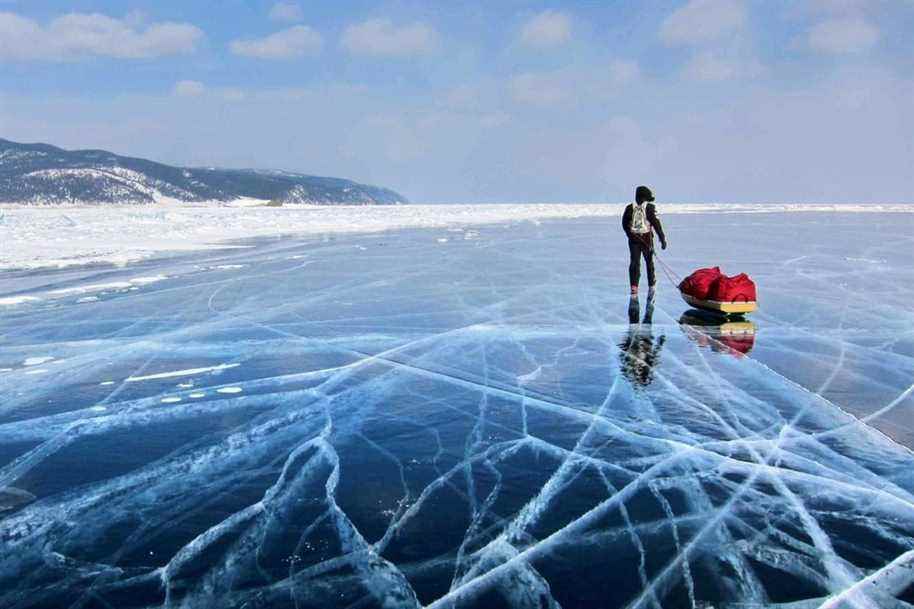The Omicron variant has dampened the enthusiasm of many Quebec adventurers. They continue to plan new expeditions, but they do so with caution, knowing that it might be necessary to modify or postpone the adventure. And to put the odds on their side, they are essentially looking at North America.
Posted at 11:30 a.m.
This is the case of Frédéric Dion. Three years ago, he set himself the goal of reaching the “pole of inaccessibility” of each continent, that is to say the furthest point of all the oceans, to human force. Two years ago, he thus reached the center of South America with two partners, Jacob Racine and Daniel Barriault.

PHOTO FROM FRÉDÉRIC DION’S FACEBOOK PAGE
Adventurer Frédéric Dion has chosen the United States as the location for his next expedition.
Next summer, he’s aiming for central North America, a point in South Dakota, which would involve 100 days of expedition and 2,700 km, mostly by mountain bike and kayak. He should notably cross Arizona, Utah, Colorado and Nebraska with different team members depending on the sections.
125 day journey
For his part, Martin Trahan plans to follow the route taken by thousands of gold diggers between 1896 and 1899 towards the Klondike, in the Yukon. If the gold diggers essentially made the journey by steamboat, on foot and by raft, Martin Trahan and his teammates intend to travel it by canoe. This involves a first 2,200 km section along the coast between Olympia, south of Seattle, and Skagway, Alaska, using the famous Inside Passage. Then, the adventurers will have to make a hellish portage of 53 km along the Chilkoot Trail, before putting the canoe back in the water to travel 800 km on the Yukon River to Dawson City.
The journey should take 125 days, but Martin Trahan, who in 2018 crossed the United States by canoe, from the Pacific to the Keys, recognizes that nothing is decided at this time.

PHOTO YAN KACZYNSKI, PROVIDED BY MARTIN TRAHAN
Adventurer Martin Trahan hopes to retrace the route of the Klondike gold diggers by canoe.
It is really not certain that the expedition will take place. You will have to cross the USA-Canada border four times and with the COVID-19 measures, by canoe, it may be complex.
Martin Trahan
“In addition, our supplies are planned in First Nations villages. So, it will be clarified at the beginning of February. The crew also remains to be finalized,” he adds.
Nicolas Roulx, who in 2021 made an incredible crossing of Canada from north to south with Guillaume Moreau and a variety of partners, i.e. 7450 kilometers on skis, canoe and bike (the AKOR expedition), has just been injured during a a climbing accident. His rehabilitation will therefore be his challenge for the year.
In 2021, director and adventurer Caroline Côté also achieved quite a feat by traveling the Arctic archipelago of Svalbard from north to south, on skis, in the middle of winter, an adventure of 1000 km carried out in 63 days. She plans to return to the polar region in November 2022, but this time, alone, for a month and a half expedition “in the cold”. As there are still a thousand things to settle, she prefers not to reveal the exact location of the adventure.

PHOTO PROVIDED BY CAROLINE CÔTÉ
Adventurer and director Caroline Côté will film the departure of Ray Zahad’s Arctic expedition in addition to planning her own adventure in polar land.
But that doesn’t mean she’ll sit idly by until then. “At this very moment, I am preparing to go and film the expedition of my friend and great explorer Ray Zahab, as well as his partner Kevin Vallely, who will leave together for a period of 40 to 50 days in the Canadian Arctic, says- she. This requires a lot of organization, material and planning, because I will be alone to film the entire first part of their journey. »
Ray Zahab, an ultramarathoner who resides in Chelsea, Outaouais, has not yet given many details about his new expedition. In 2006-2007, he made a name for himself by crossing the Sahara at a run (a “small” marathon of 7500 km), but he has since made several Arctic expeditions.
Smaller projects

PHOTO FROM SÉBASTIEN LAPIERRE’S FACEBOOK PAGE
Sébastien Lapierre will be back on the Innu-Montagnais master trail between Quebec and Lac Saint-Jean.
Other adventurers have more modest projects, but still interesting. Last year, Sébastien Lapierre (the first Canadian to reach the South Pole alone and fully independently) attempted to travel the Innu-Montagnais trail that connects Quebec City to Lac Saint-Jean, in the company of Olivier Hubert-Benoit. Poor track conditions forced the men to abandon the game.
“This year, I will continue to work on my long-distance hiking trail project linking Quebec City to Saguenay–Lac-Saint-Jean,” he says. I explored a bit last summer. In the summer, it’s quite simple given the large amount of snowmobile trails that are not used during this season. It is in winter that it becomes more complex. I’m trying to find a way to make it more accessible in order to develop a trail that can be used year round. »
Sébastien Lapierre’s efforts could therefore allow hikers, one day, to experience great expeditions in turn.
Suggested video
Virginia Winter Canoe
Canoeing is also done in winter. Especially when the winter is milder than in Quebec.
digit of the week
-1.8°C
Seawater does not freeze at 0°C, but at -1.8°C due to its salinity. And again, it may require an even lower temperature due to currents.

